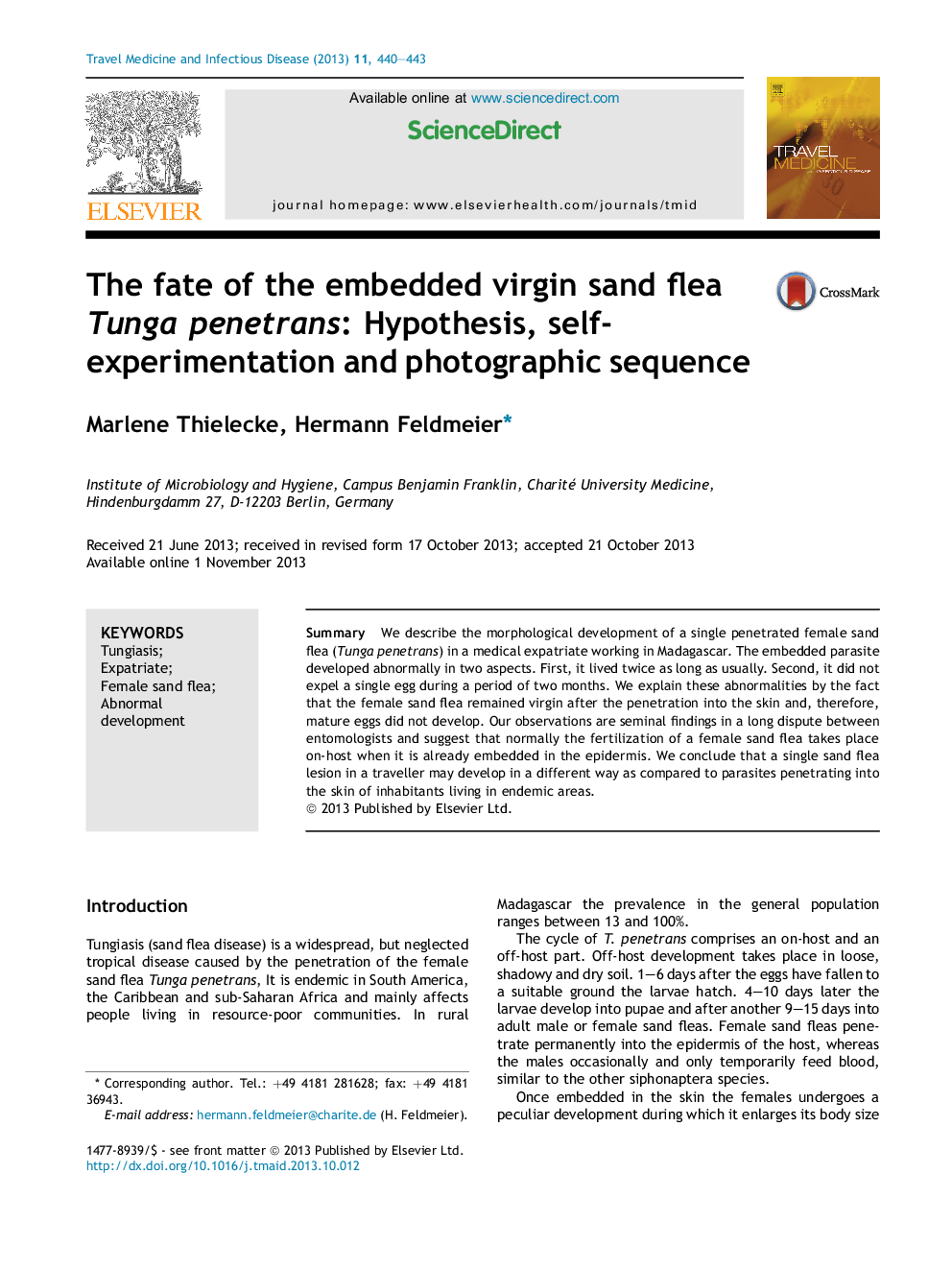| Article ID | Journal | Published Year | Pages | File Type |
|---|---|---|---|---|
| 3392892 | Travel Medicine and Infectious Disease | 2013 | 4 Pages |
SummaryWe describe the morphological development of a single penetrated female sand flea (Tunga penetrans) in a medical expatriate working in Madagascar. The embedded parasite developed abnormally in two aspects. First, it lived twice as long as usually. Second, it did not expel a single egg during a period of two months. We explain these abnormalities by the fact that the female sand flea remained virgin after the penetration into the skin and, therefore, mature eggs did not develop. Our observations are seminal findings in a long dispute between entomologists and suggest that normally the fertilization of a female sand flea takes place on-host when it is already embedded in the epidermis. We conclude that a single sand flea lesion in a traveller may develop in a different way as compared to parasites penetrating into the skin of inhabitants living in endemic areas.
